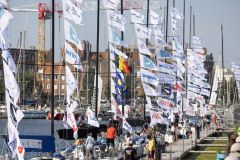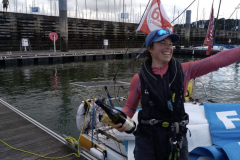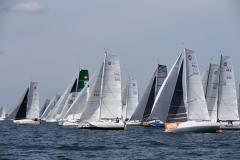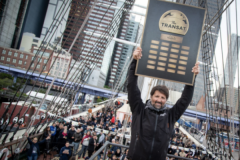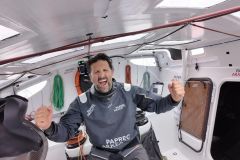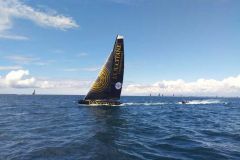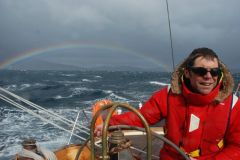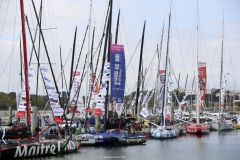In the 1950s, sailing was an elite sport. It is seen as reserved for fools, death-defying adventurers who dare to do what no one would even think of doing. The sea is scary, crossing an ocean all the more so. So, imagine this journey alone? All this determines the most conquering minds to embark on the quest for an ever-more satisfied one. At that time finding partners for such a race would be extremely far from the truth. It took no less than ten years to enable Sir Francis Chichester and Blondie Hasler to convince these financiers that the transoceanic crossing could be done without degenerating into a catastrophe. It was towards the end of the 1950s that the newspaper "The Observer" took the plunge. In 1960, under the direction of the Royal Western Yacht Club of England, the "Observer Single-handed Trans-Atlantic Race", or OSTAR, was organised.
The OSTAR, a complicated race
From the first edition, things are clear. Although crossing the Atlantic via the North Route is a customary practice for cargo ships and other fishermen, it is new to sailing. All the more so for a single-handed race. Modern means such as AIS and other satellite guidance allow us to envisage such a crossing in 2020 with a touch of serenity. Of course, they didn't exist 70 years ago. Of the 150 candidates at the start, only 50 applications were submitted, only 8 of which were confirmed and put to sea. It is easy to imagine the state of anxiety these men were in at the time, presenting themselves at the start of this single-handed race, without assistance or stopovers.
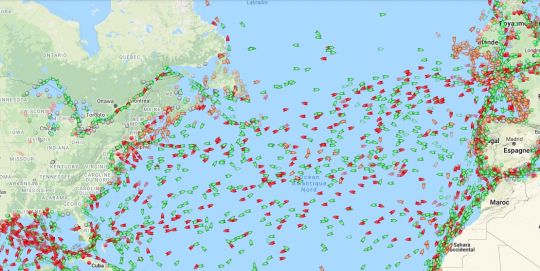
It will be Sir Francis Chichester, the well-known sailor who will win this original edition, in 40 days 2 hours and 30 minutes of battling against the headwinds and ice coming down from the Arctic. Fight against disease too. He had been diagnosed with lung cancer two years earlier. Francis Chichester won this crossing aboard Gypsy Moth III, which he launched just 10 weeks before the start of the race.
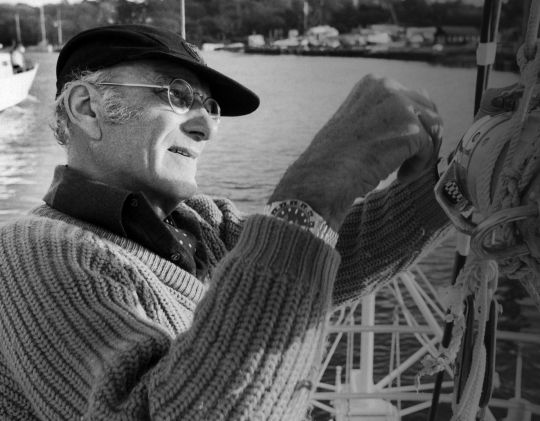
A polymorphous race
This first edition consisted of the journey from Plymouth in Great Britain to New York in the United States of America. For it is also one of the peculiarities of this transatlantic race that the starting point and destination change as much as the name or rules, almost every 4 years. The same year that the Vendée Globe for the record.
It was called OSTAR until 1988. It then became Carlsberg STAR and was renamed Europe 1 STAR in 1992 and 1996, then Europe 1 New Man STAR in 2000. In 2004, it officially became The Transat, with an organizational torch passed from the RWYC to Mark Turner and his company Offshore Challenges. New evolution in 2005. Two races are created, one for boats under 50 feet called the Corinthian Race, the other for boats over 50 feet, The Transat. From 2004 onwards, two races are run, one every 4 years with 2004 as a base reserved for professionals, the other with 2005 as a base open to all.
As for the routes, they will have been less changeable than the names, Plymouth then Brest as a starting point, to reach the United States ports of Newport, New York, Boston or Charleston.
The French in the race
One constant in this race remains the commitment and the - frequent - triumphs. Éric Tabarly in 1964 and 1972, Alain Colas in 1968 (the troubles of May 68 had prevented Tabarly from preparing Pen Duick III properly), Peyron in 1996 and then, in 2016, quadruple victory for the French sailors with Gabart for the Ultime class, Lamiré for the Muti 50, Le Cleac'h at the helm of an IMOCA and Vauchet in Class 40. It is also one of the particularities of the professional version of this transatlantic race to allow so many different classes to be entered, thus reserving the possibility of superb victories.

Distinct strategies
Sailing across the North Atlantic meets a number of constraints which together create 2 different routes. The winds first. Broadly speaking, over a sector from the north of Scotland to the northern tip of Portugal, the winds come from the west (the American continent) and go east (Europe). The currents, then. The famous Golf Stream goes diagonally up the Atlantic, from Central America to Scotland, coming to the passage to lick in a northern flow the French coasts. Then comes the Labrador Current (the one that brings the ice down from the Arctic), in the North-West, and the Canary Current (also cold), in the South-East, two southern flow currents. In short, an accumulation of meteorological specificities known for a long time, which give, in the main lines, 2 possible routes, North or South.
The southern route is planted with the Azores High in its centre. If it is comfortable, it is more suitable for cruising than racing. However, it is not a technically simple route either and, above all, it is not the fastest or shortest way to reach the north-eastern coast of the United States.
The north road, on the other hand, is a gamble. As fast and direct as it is from Europe to land in New York, depending on the year the ice can meet and jeopardize the safety of navigators. And the meeting of currents, Golf Stream and Labrador creates situations that will often be Dantesque for the competitors. Add the fog in the islands of St. Pierre and Miquelon and around Newfoundland to create an unattractive scenario.
It is these specific features, both meteorological and current, which make the Transat a complex and technical race, far removed from the image one might have of a "simple transatlantic race".
Whatever the route or strategy chosen, the Transat is always a sprint that is run from start to finish, with no respite for either the men or the machines.
Young grandmother of ocean racing
A classic among the classics, The Transat CIC as it is now called does not, however, represent the simplest race on the circuit. The congested route, the changing weather, the ice and the decisive options that the sailors will or will not take, paint the picture of a lively race full of twists and turns. If Tabarly, Chichester or Peyron have worn out their underpants on the waves of the Atlantic, this young grandmother is nonetheless a milestone in the careers of today's sailors.
Appointment is taken for the 2024 edition.
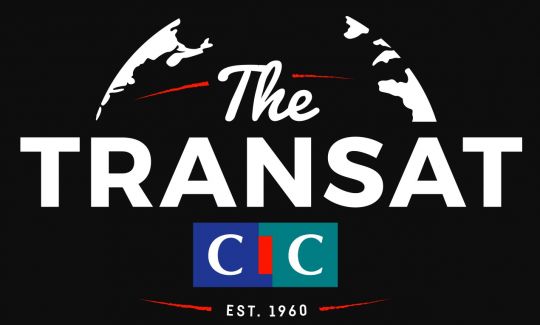

 /
/ 



